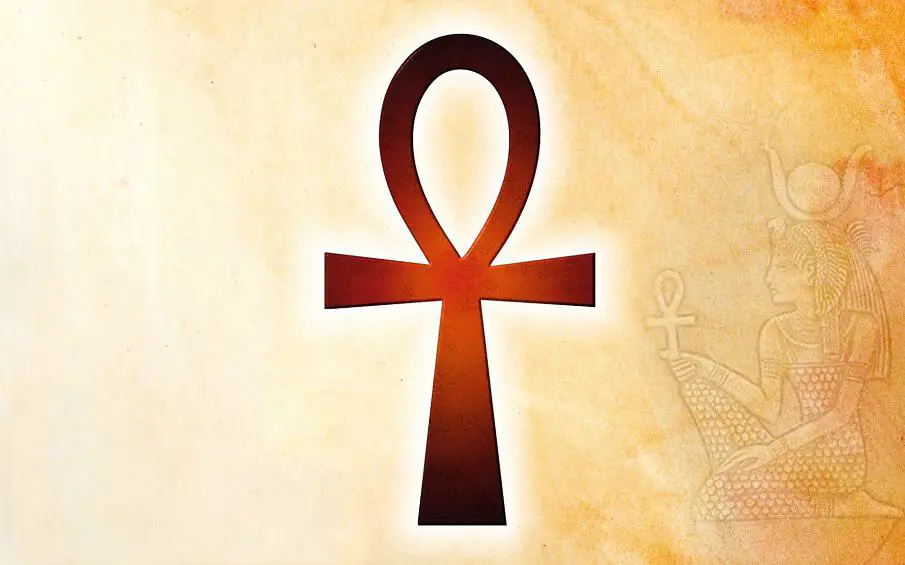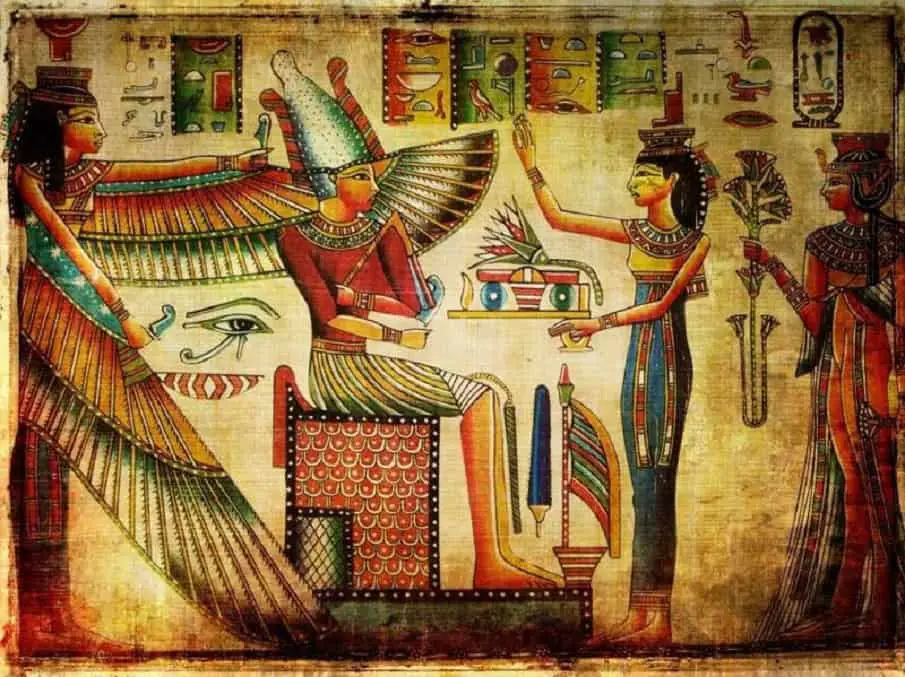The Land of the Pharaohs as I like to call Egypt is filled with incredible tales. Spanning back thousands of years, the Ancient Egyptian civilization left its mark in the history books forever.
Erecting some of the most amazing monuments on the planet, the ancient Egyptians were experts in a number of things ranging from astronomy, medicine, to engineering and writing.
Ancient Egypt’s culture is replete with mythology, and much of their history is a mixture between actually verifiable accounts, and those tucked away in myths, through which the ancient Egyptians tried explaining events that occurred and that were difficult to explain: The reasons for death, diseases, harvests, etc.
Everything we see is related in one way or another to incredible stories, mythologies, and beliefs which is precisely why the ancient Egyptians created countless of symbols through which everything was explained.
In this article, I invite you to travel through time with me, as we explore some of the most important ancient Symbols used by the Egyptian civilization thousands of years ago.
The Ankh

Without a doubt, one of the most famous symbols connected to the ancient Egyptian civilization is the Ankh ☥, also known as “crux ansata.” This ancient Egyptian hieroglyphic ideograph symbolizing “life.”
Many Ancient Egyptian Gods are portrayed as carrying the Ankh by its loop. The symbol is often featured in hand or proximity of nearly every deity in the Egyptian pantheon, including in illustrations of the pharaohs.
The Uraeus
 Mask of Tutankhamun’s mummy featuring a uraeus, from the eighteenth dynasty. The cobra image of Wadjet with the vulture image of Nekhbet representing the unification of Lower and Upper Egypt Image Credit: Wikimedia Commons.
Mask of Tutankhamun’s mummy featuring a uraeus, from the eighteenth dynasty. The cobra image of Wadjet with the vulture image of Nekhbet representing the unification of Lower and Upper Egypt Image Credit: Wikimedia Commons.
Another popular symbol used in ancient Egypt was the Uraeus. The Uraeus is the stylized, upright form of an Egyptian cobra. The symbol represents sovereignty, royalty, deity and divine authority in ancient Egypt. The mask of Pharaoh Tutankhamun features a Uraeus.
The Eye Of Horus
 An Eye of Horus or Wedjat pendant. Image Credit: Wikimedia Commons.
An Eye of Horus or Wedjat pendant. Image Credit: Wikimedia Commons.
Another extremely well known ancient Egyptian Symbol is the so-called Eye of Horus ?.
The symbol was widely recognized as an emblem of protection, royal power, and good health. In ancient Egypt, the Eye is personified in the goddess Wadjet, the patron and protector of Lower Egypt and upon unification with Upper Egypt, the joint protector, and patron of all of Egypt “goddess” of Upper Egypt.
Horus is an ancient Egyptian God usually depicted as a falcon. Horus’ right eye was connected with the Sun God Ra.
The Sesen-Lots Flower

Another ancient Egyptian symbol that represents life, creating, rebirth and the sun is the Sesen. This ancient Egyptian symbol is believed to have appeared during the Early Dynastic Period, although it became most popular from the Old Kingdom onwards. The Sesen is symbolized as a lotus flower which we see widespread in ancient Egyptian art.
The Scarab
 Scarab with Separate Wings, ca. 712-342 B.C.E., 49.28a-c, Brooklyn Museum. Image Credit: Wikimedia Commons.
Scarab with Separate Wings, ca. 712-342 B.C.E., 49.28a-c, Brooklyn Museum. Image Credit: Wikimedia Commons.
The Scarab was an extremely important ancient Egyptian symbol represented in the form of the dung beetle.
The symbol was associated with the divine manifestation of the morning sun Khepri, who was believed to roll the disk of the morning sun over the eastern horizon at daybreak.
The symbol of the Scarab was extremely popular in amulets and impression seals in the ancient Egyptian culture.
The Djed
 A scene on the west wall of the Osiris Hall at Abydos shows the raising of the Djed pillar. Image Credit: Wikimedia Commons.
A scene on the west wall of the Osiris Hall at Abydos shows the raising of the Djed pillar. Image Credit: Wikimedia Commons.
This symbol is considered one of the most ancient symbols of the Egyptian culture. The symbol represents stability and is associated with the God Ptah and Osiris.
When representing Osiris, the symbol was often combined “with a pair of eyes between the crossbars and holding the crook and flail.”
Furthermore, the Djed Pillar is the oldest symbol of Osiris and was of great religious significance to the ancient Egyptians.
On a curious note, the ancient Egyptian maintained that the Djed Pillars were used in the four corner of the earth, keeping the earth in place.
The Was—The Was Scepter
 This image shows the Upper part of a stela showing a standing man adoring Ra-Horakhty who holds a was-scepter. Image Credit: Wikimedia Commons.
This image shows the Upper part of a stela showing a standing man adoring Ra-Horakhty who holds a was-scepter. Image Credit: Wikimedia Commons.
This is one of the ancient Egyptian symbols that was often depicted together with the Ankh Cross.
The Was is believed to have represented a ceremonial staff.
The Was symbol is depicted in the hands of a number of ancient Egyptian Gods, particularly Anubis and Set.
On a personal note, it is one of the strangest symbols I’ve seen.
Curiously, depending on how it was written, the symbol sometimes gave off the impression of being an emblem representing a being with an elongated head, a thin body. But that’s just me.
Tyet—The Knot of Isis
 Image Credit
Image Credit
The so-called tyet is an ancient Egyptian symbol connected to the goddess Isis. The symbol is eerily similar to the Ankh cross. The Tyet has arms that are curved downwards. It is believed it signifies welfare and life.
During the early New Kingdom, Tyet amulets were buried with the dead. In Chapter 156 of the Book of the Dead, a New Kingdom funerary text, calls for a tyet amulet produced of red jasper to be put at the neck of a mummy, stating “the power of Isis will be the protection of [the mummy’s] body” and that the amulet “will drive away whoever would commit a crime against him.”
The Ben-Ben
 Image Credit: Shutterstock.
Image Credit: Shutterstock.
This ancient symbol is “the best-known symbol from ancient Egypt, after the ankh, even if one does not recognize the name.”
As noted by ancient.eu, the ben-ben was the primordial mound upon which the God Atum stood at the beginning of creation.
The symbol is connected to the pyramids, as these structures represent the ben-ben as the rise from the Earth towards the heaven.
The Crook & Flail
 The crook and flail on the coffinette of Tutankhamun. Image Credit: Wikimedia Commons.
The crook and flail on the coffinette of Tutankhamun. Image Credit: Wikimedia Commons.
Another extremely popular symbol in Ancient Egyptian art is the Crook and Flail.
This symbol represents power and majesty of the king. Like many other symbols, this too was associated with Osiris and his early rule on Earth. Egyptian Pharaohs carried these symbols in important ceremonies. The coffinette of Tutankhamun has the Crook and Flail symbol represented on its surface.
Akhenaten—Egypts most heretic ruler—was often depicted with the crook and flail.

 Movie
Movie 3 months ago
54
3 months ago
54 






![Presidents Day Weekend Car Sales [2021 Edition] Presidents Day Weekend Car Sales [2021 Edition]](https://www.findthebestcarprice.com/wp-content/uploads/Presidents-Day-Weekend-car-sales.jpg)



 English (United States)
English (United States)